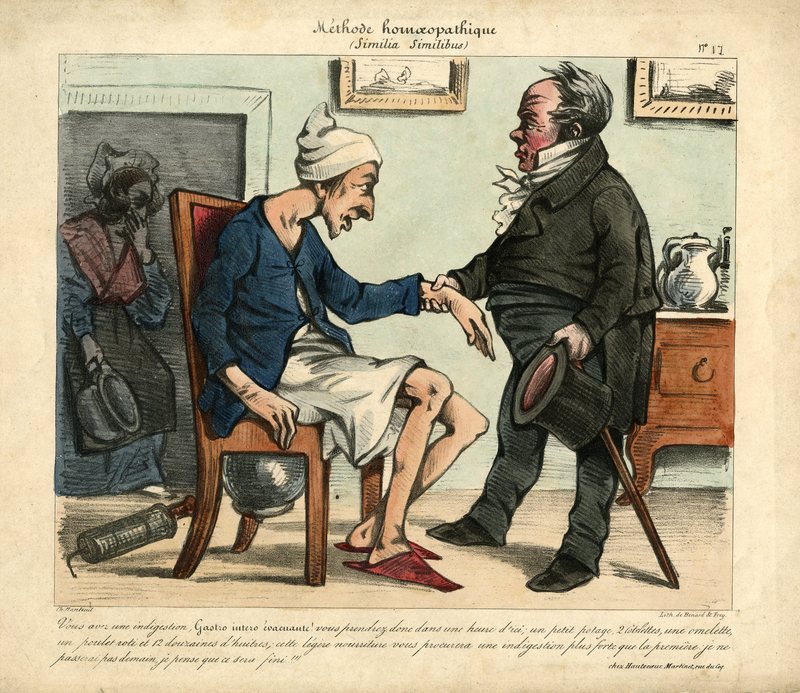Laws of Homeopathy
The law of similars is often summarized by the Latin phrase, "similia similibus curantur," usually translated as "like shall cure like." Samuel Hahnemann devised the first so-called "provings," experimental tests of drugs on healthy individuals to document the homeopathic effect. Hahnemann's major statement on homeopathic theory, the Organon der rationellen Heilkunde was first published in 1810 and soon was followed in 1811 by the first volume of the Reine Arzneimittellehre, describing the provings with the medicines and symptoms each provoked. Physicians would then be able to prescribe a homeopathic preparation based on the symptoms of each patient.
The second foundation of homeopathy was the law of infinitesimals. Hahnemann came to believe that when the homeopathic preparations were prescribed in substantial doses, the homeopathic effect could aggravate the original symptoms, but diminishing the size of the dose could alleviate the aggravation of the symptoms and yet still provide the curative effect. Essentially, the smaller the dose of the homeopathic preparation, the more effective would be the stimulation of the vital force to combat the disease. One part of the preparation in 99 parts of milk sugar or alcohol was the first centesimal dilution or potency; if one part of that mixture was then subsequently combined with 99 parts of a second preparation and shaken, this would be the second centesimal dilution, and so on down to the thirtieth dilution, each dilution growing successively stronger. These minute dilutions were knows as "high potencies" and would prove to be an idea difficult for regular physicians, sometimes referred to as "allopaths" in distinction to homeopaths, to accept.

